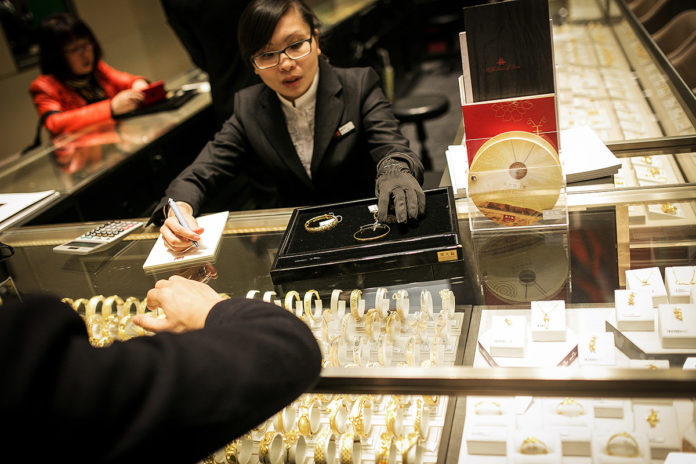E-commerce companies on the Mainland have yet to achieve the digital penetration in the luxury category that they have in online apparel and footwear, yet Chinese luxury purchases drove nearly two-thirds of the market in the last half of 2016, according to a joint-authored Exane BNP Paribas and Contactlab report.
The report says ‘Chinese luxury demand has continued to improve on a quarter-by-quarter basis ’ over the course of last year, both on the Mainland itself and abroad.
January figures – slightly distorted given the falling of Chinese New Year during the last week – ‘also pointed to a positive trend’ with the report noting that ‘Chinese officials are likely going to be supportive of the economy and demand.’
The most recent data from the Statistics and Census Service (DSEC) shows that the imports of gold and jewellery in January of this year posted a 33 per cent increase year-on-year, while that of handbags and wallets increased 19.3 per cent. Watches saw a 27.2 per cent year-on-year increase in the value of imports during the month.
Regarding brands most likely to attract that luxury spending, of which China is expected to ‘make a good contribution to global growth in 2017,’ those best positioned, according to the report, all come in with sales exposure to Greater China equal to or above 20 per cent.
Leading the pack is Swatch, with a 47 per cent sales exposure ‘to Chinese’ and a 34 per cent exposure to Greater China, followed by Burberry, with 40 per cent exposure to Chinese customers and 21 per cent to Greater China.
With higher Greater China exposure but lower overall exposure comes Richemont, with 36 per cent to 24 per cent, respectively. Prada sits at the bottom of the list, with 35 per cent exposure to Chinese and 20 per cent exposure to Greater China. All four luxury retailers have a presence in the MSAR.
Risk, reward
‘Risks for the sector in full year 2017 seem political in nature,’ posits the report, noting that the ‘most important risk is by far an outright falling out of the Sino-American relationship.’ This will be put to the test as Chinese President Xi Jinping meets with U.S. President Donald Trump in early April at Trump’s Florida resort.
Fallout could also ‘puncture’ the ‘Chinese consumer feel-good factor,’ notes the report, pointing in particular to options like the U.S. border adjustment tax as ‘a negative.’
Luxury demand to date has grown both in Greater China and abroad, at a 25 per cent year-on-year increase in the fourth quarter of last year and a 15 per cent increase year-on-year, respectively, notes the data. This came after negative consumer sentiment outside the Mainland, exacerbated by the devaluing yuan in the first half of the year, resulting in negative growth.
One of the opportunities awaiting luxury brands is in their online sales as ‘Luxury brands with direct ecommerce operations in China reached a similar 7 to 8 per cent penetration of digital sales to total sales,’ which the group points out is ‘in line with the global average and somewhat underwhelming,’ when compared to that of online apparel and footwear penetration which is ‘almost three times higher than the world average.’
In particular, internationally recognised companies with little exposure to Greater China such as Hugo Boss with only 8 per cent exposure, and a 16 per cent exposure to Chinese nationals, or Luxottica, with a 3 per cent exposure in both categories, according to the data, could benefit from a revamped online marketing effort to drive exposure and sales in Macau, the Mainland and internationally, but always focused on a Mainland Chinese audience.
























